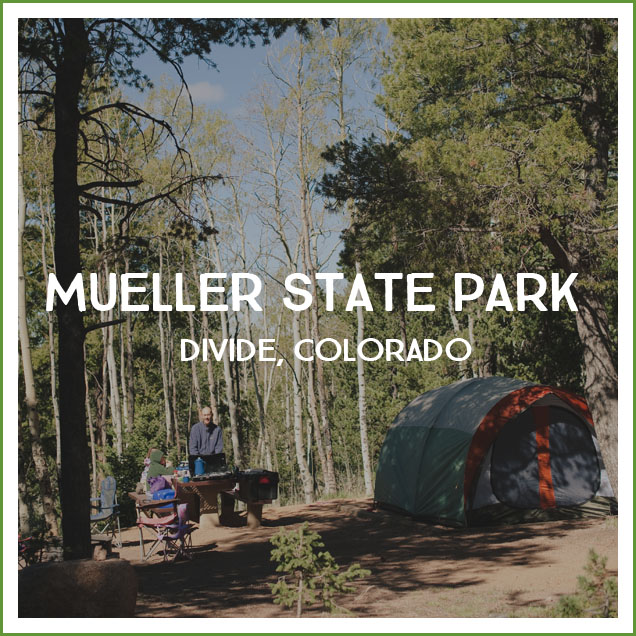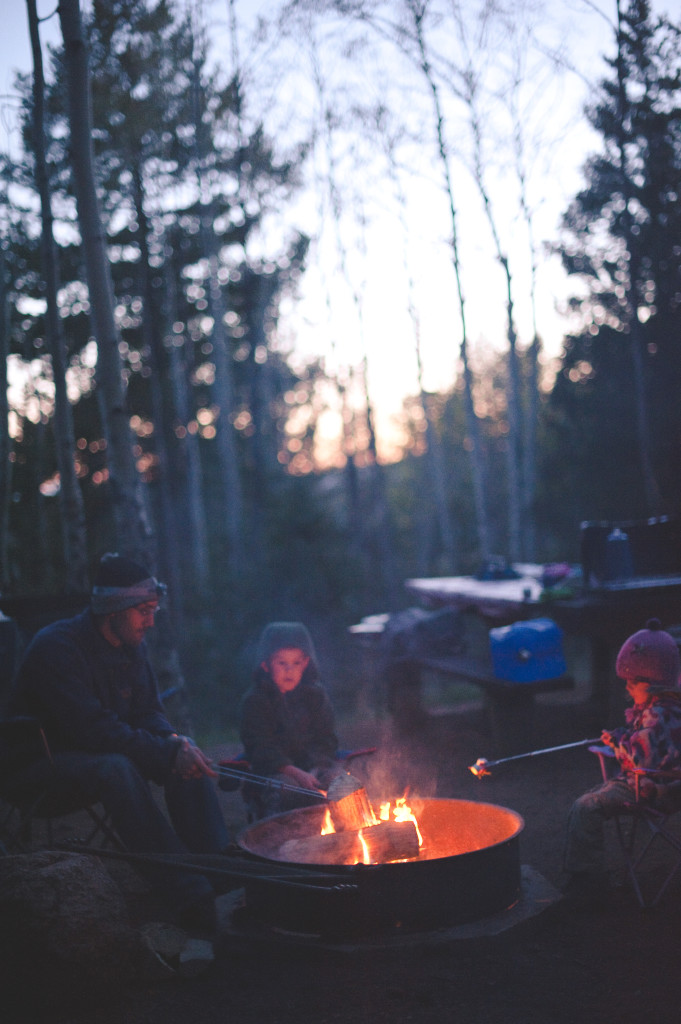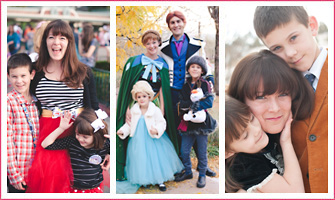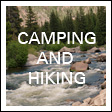Mueller State Park campground is Nic’s favorite place to tent camp in Colorado. It’s nearby, clean, and has great facilities. By camping in the tent only campsite loops you get the best of both worlds–all the facilities of a larger RV friendly campground with none of the noise and visual clutter of RVs! As a park it doesn’t have much to offer in the way of great hikes or activities (compared to somewhere like the Sand Dunes), but if you just want a great weekend camping, this is a wonderful spot. It’s also not hard to find nearby activities to keep you busy if you want to leave the park.

Pros: The tent-only sites are great, and a very short walk from the parking area. The facilities are awesome–although there is a vault toilet at the end of the loop, it’s just a short walk down to real toilets. I have a decent fear of a poop monster lunging up and eating me while I sit on a vault toilet, so having a rustic tent-only campsite that is a five minute walk from a real flushing toilet is the dream. You’re completely sheltered from the RV area and won’t hear a single generator.
Cons: You have to pay for both the campsite and Mueller State Park access, so you’re hit with two fees.
Campsite recommendations: We like to stay at Prospector’s Ridge, since it is a slightly shorter walk from the car to the campsites (and we lug a lot of stuff when we tent camp) and it’s a perfectly reasonable walk to flushing toilets. We stay at Site 57, which is a nice large campsite with lots of aspens off the back of it for the kids to play in. You’re separated by trees from site 59, but see a lot of site 55 (and some of 56). The downside to staying near the beginning of the loop is that you’ll hear a lot of foot traffic going back and forth to the bathroom, but the upside is that shorter walk in with your stuff. The other tent only loop, Turkey Meadows, offers more sweeping views, but a longer walk in to the site and it’s not convenient to the flush toilets/shower area. We think the campsites would be beautiful in the fall–lots of opportunities to spot fall foliage.
Facilities: Vault toilets and a water spigot at the tent only loop trailheads (when the water works) and a new large ‘shower house’ with showers, flush toilets, sinks, and washing machines/dryers. It has a large playground next to it that is a big hit with the kids when we wash dishes or get ready in the morning.
Nearby activities:
Photos:

.jpg)


The nearby Florissant Fossil Beds National Monument with its petrified forest:
  
The nearby Hornbek Homestead (link to an article about the Hornbeks and the free to the public museum). We lucked out and managed to tag onto the last 5 minutes of the last tour of the day :
 
The Crags Trail is a fantastic hike for while you’re camping at nearby Mueller Park. It follows the Four Mile Creek valley to the Crag formations on the ‘back side’ of Pikes Peak.

Pros: This is a great hike with lots of variability in the scenery. It’s a nice length for elementary school aged children and the Crag formations at the top are a good pay-off for your efforts.
Cons: The distance from Colorado Springs is the only thing that keeps us from enjoying this hike more often.
Distance/Difficulty: 4 miles, approximately 800 ft elevation gain. The majority of the hike is flat-ish, with the major push to the top at the end. This is a moderate difficulty hike for little legs, though Ellie made it to the top without being carried at 3. (She was carried on the way home…and she promptly fell Floppy Level Asleep in Nic’s arms.)
Directions: From Colorado Springs Trails: “Take US-24 west and turn left at traffic light in Divide. Drive south on US-67 for about 4 miles. Turn left to CR-62 right after you pass the entrance to Mueller State park on the right. Drive 3 miles on the dirt road and you will see the new trailhead parking lot on the right side. Crags campground located 1/4 of a mile further down the road is no longer used as the official trailhead.”
Trail Teaching:
- The first part of the trail is part of a route to the summit of Pikes Peak. Pikes Peak Granite is molten rock created approximately 1 billion years ago by volcanoes. The magma cooled into the Precambrian Pikes Peak Granite igneous intrusion known as the Pikes Peak Batholith. The magma was buried about 2 miles underground, so it took thousands of years to cool. The Crags are parts of this formation that have been exposed as the sedimentary rock above the Pikes Peak Batholith have eroded away. The formations were created by vertical fractures in the granite caused by stresses like the initial uplift of the Front Range (called the Laramide Orogeny). (This type of mountain building is responsible for the initially horizontal layers of rock being tilted upward and exposed in vertical layers.) Fractures allow water to seep in, freeze and expand, widen the fracture, and eventually break the granite apart in vertical slabs.
Photos:




Four mile creek hidden under ice and snow:
   

Further reading: Colorado Springs Trails and Every Trail have a good summary and Colorado Photo Hikes has a great number of photos.
We went to Kelsey Campground with our cub scout den last summer. This campground was chosen for its ability to accommodate one of the family’s large RVs as well as the fact that we made our reservations relatively late. The fact that they still had spots open was an accurate indication of the quality of the campground. It was one of several trips we made last year that solidified for me that when I go camping, the beauty of the campsite and its feel of relative isolation are huge factors in my enjoyment. So, my caveat with my campsite reviews is that I’m very much a campsite snob. I like them with beautiful views, remote in feel, and with preferably nothing but fellow tent campers for neighbors.

Pros: Open spots available for reservation relatively late. There is a nice hike up Little Scraggy Peak right from the campground. If you could get over the lack of anything remotely like a tent pad, our spot was well separated from other campers (though noise from other campers would be preferable to the highway noise)! The campground was small and family friendly–there were a lot of kids riding bikes around the paved loop of the campground. If you are an RV camper, I’m sure this would suit you just fine.
Cons: This campground is right near the busy highway and the traffic noise makes it feel like you are camping alongside a highway (which you really are). Some of the sites listed as tent only sites aren’t actually appropriate for tents. As Nic put so well to the campground host, “Just because it’s not suitable for a trailer or RV doesn’t make it appropriate for a tent.” We stayed in site #17 and there was no flat area for putting a tent. We had to walk into the brush to find a flatish spot for the tent (and therefore trampled the vegetation we pitched our tent on).
Campsite Recommendations: If I were going to camp here again, site 14 or 15 would be my choice. (But I’d have a pretty bad attitude about it.) ;P
Facilities: Particularly potent vault toilets, a water spigot (the website said there was no on site water, but we did find the water spigot to be functional when we visited in July 2014), and a fire pit and picnic table at every campsite.
Nearby activities: The short hike up Little Scraggey Peak from the campground was great. It featured a lot of interesting plant and bug life, including dandelions the size of Ellie’s head. The area offers much in the way of hiking. Our group wasn’t big on hiking, so we didn’t get to delve much into that area. We did visit Cheesman Lake, which was a short drive away and offered a short (or long) walk along its shores. Nearby Deckers offered a place for ice cream after our visit for the reservoir, which was delightful until a group of bikers showed up and chose to use the kind of language I reserve for sewing, frosting birthday cakes, and any time I have to clean the children’s bathroom. No one is allowed to drop that many f-bombs in front of my children but me, people!
Photos: (I didn’t take these photos with a review in mind so I’m punting a bit for photos that reveal the nature of the campground.)
 

   

Two photos from the side trip to Cheesman Reservoir:
 

 
Next month will mark the two year anniversary of the Black Forest Fire, and also hopefully a high point in the wildflower season making it a great time to visit the Section 16 trail in Black Forest. The trail is a four mile relatively flat loop through both burn scar and unscathed forest. As such it makes for an amazing learning opportunity!

Pros/Trail Teaching: We like using this trail to beef up the kids’ mileage endurance. It’s a trail I’m comfortable taking either or both kids on by myself, and is well used without being crowded. The opportunity to see how the forest is regrowing in areas lightly burned but very much struggling in the high heat areas where the top soil burnt away is great in illustrating the importance of forest management. Wildfires have played such a dramatic role in our community in the last couple of years that I think that letting kids see how things regrow after devastating loss is incredibly important and offers teaching opportunities beyond the literal regrowth of the forest.
Cons: This is a great walk or trail run, but if you are looking for a true HIKE, this will leave you unimpressed. Were it not for the fire, Section 16 is easily a pass for anyone not directly in the area.
Distance/Difficulty: While not as flat as the Indian Paint Mines, there is no significant elevation gain in this four mile loop. Mile markers and maps at the corners of this rectangular park help kids track their progress. (“Make it to the next map and then you can have a granola bar!”)
Directions: This is just west of the intersection of Burgess Rd and Vollmer Rd. The parking lot is large and well marked. You can join the trail at either end of the parking lot and go either clockwise or counterclockwise around the rectangle.
Photos:
This first group is from September, 2013:
 
This next group is from June 2014. We went on Father’s Day and the wildflowers were spectacular. There were so many different kinds. I’m hoping for the same type of display this year–we’ll be back with a wildflower guide this time!







This sign ironically predates the fire–the stand and display show marks of the fire, and it is even more educational in light of its new surroundings!
Further Reading: This post has great photos of the park and what to expect. If you weren’t intimately familiar with the Black Forest Fire of June 2013 I would read up about it beforehand. If you stop at the R&R Cafe south of the intersection of Black Forest Rd and Burgess Rd they have (a) great coffee and treats but also an amazing pamphlet that was created by the Black Forest Historic Society that goes into much more detail about the fire. Section 16 was the site of not one but two separate heroic efforts by firefighters to save The School in the Woods (which I still get teary about–to my surprise I welled up as I started to type this). School in the Woods is located in Section 16–you’ll walk by it if you do the full loop–and in the months immediately after the fire you could see the exact perimeter of protection that the firefighters created. The boundary looped out in one spot to include a small tree planted in memory of a former student. It was impossible to see and not want to bear hug every single fire fighter on the planet. The many many stories of little acts of thoughtfulness from those days still leave me without words.
No hike so thoroughly divides our family as Seven Bridges. The kids and I would rate it as one of our favorite hikes…Nic would rather get a root canal than go on it a third time. If crowds and dog poop are deal breakers for you, skip this one. If you are big fans of creeks and some water play time, it might be worth it.

Pros: Once you get past the Gold Camp Road portion, this trail is beautiful, shady, and follows North Cheyenne Creek most of the time (leading you to cross the seven bridges that gave this trail its name). Most kids love hiking along a stream, and this momma does too. The reward for your hike is at the top, a great spot to splash around in the icy cold water. (Hint: we have the kids wear their hiking boots but bring a towel and Keen sandals for them to wear at the top for water play. They wear their swimsuits under their hiking clothes on the way up, and then quickly change into underwear and back into their clothes under the cover of a towel when it’s time to head down.) The other thing I like about this hike is that you could easily back out at one of the middle bridges that have a nice splashing area (there are a few) and make the hike shorter if your kids are just starting out. The seventh bridge is a nice place to stop, but it’s not the only spot suitable for a break and a turn-around point.
Cons: To get to the trail you have a 3/4mile walk along Gold Camp Road. This particular section of Gold Camp Road is now called “The Poop Trail” by our family as it is absolutely littered with piles of dog poop. The entire stretch stinks like dog feces as is rather miserable. The hike is also very popular, which means that it is a crowded trail. It’s narrow in most places which makes for a lot of pausing to let other groups go around you (or hoping they will pause to let you pass).
Distance/Difficulty: At 4.75 miles and 1600 ft of elevation gain, this is an easy hike for adults, but a good stretch for preschool hikers. The motivation of water play at the top makes this a great one for stretching their abilities, though–the payoff at the top is big!
Directions: From I-25 take exit 140 to follow Nevada south. Turn west onto Cheynne Blvd and follow it to the Starsmore Discovery Center, then turn right onto North Cheyenne Canyon Rd. You will drive past Helen Hunt falls to reach the large parking lot that marks the intersection with Gold Camp Rd. There are several hikes that begin here, so expect the parking lot to be crowded if you don’t get an early start. The hike starts out flat and boring with 3/4 mile on Gold Camp Rd. As Gold Camp Rd bends to the left you will see a trail marker for trail 622–this is where the hike truly begins. It is then 1.6 miles up to the seventh bridge. If you’re looking for a more challenging hike you can follow the trail past the seventh bridge to Jones Park. (We have yet to try that–maybe I can convince Nic to slog through The Poop Trail to try it out this summer…)
Trail teaching:
- The way creeks and rivers have sculpted the canyons
- Use the dog poop as a lesson about
why we don’t have a dog how one single disrespectful act can multiply and ruin things for everyone. 😉
- In the spring talk about how the creek is fed by melting snow and that contributes to its icy temperature!
- Make temporary tiny dams from rocks/branches when you stop to play in the water and watch how the water is diverted and see if it will eventually break through. Point out the much larger scale naturally occurring versions.
- Look for different types of rock (beginning with the broader igneous vs. sedimentary vs. metamorphic categories). Let the kids bash different types of small stones against each other as you walk, exploring the relative durability of each. (This used to be a huge distraction for Will on longer hikes!) Talk about different situations that might have two different types of rocks coming into contact with each other.
Photos:


The Gold Camp Rd dog poop smell makes Ellie sad.

The hike in on Gold Camp Road and the marker at the beginning of Seven Bridges Trail

Once you are past Gold Camp Rd, the hike is shaded which makes it a nice choice on a cool day.

See if you can spot the gorilla in the tree!
 

If you have a bad attitude about a hike, Ellie is happy to literally make you smile.

Counting the bridges as you pass them is a good way to motivate little people on this longer hike.

The area at the top with the seventh bridge is popular for splashing and exploring.

You can see the big difference in foliage between our first May visit and our second visit in July (the following year).





Further reading: Check out the trail guides here and here for more detailed topographic info.
Will’s first ever hike as a young two year old was this short walk in Garden of the Gods. If you have family in town and you’re visiting Garden of the Gods and want to do more walking than on the paved area central to the park, this is a good option.

Siamese Twins Trail – 1 mile, SIAMESE TWINS TRAIL is an easy 1 mile roundtrip, with less than a 150 foot rise. There is a unique view of Pikes Peak through the natural window of the twins.
Pros: This is the easiest and shortest walk we’ve been on–this is a very accessible outdoor activity with fun views of Garden of the Gods. Unlike the main Garden of the Gods loop, this is unpaved and much less crowded.
Cons: If you’re hoping to feel a sense of accomplishment from your hike, this is not the one for you. 😉 Easy and short.
Distance/Difficulty: 1 mile, less than 150 ft elevation gain, easy as pie. If Mt Cutler is like Hiking 101, this is Remedial Hiking 050.
Trail Teaching:
- Stopping at the Visitors Center before the walk will give you plenty to talk about!
- The geology behind the striking Garden of the Gods formations. From Wikipedia: “The outstanding geologic features of the park are the ancient sedimentary beds of deep-red, pink and white sandstones, conglomerates and limestone that were deposited horizontally, but have now been tilted vertically and faulted by the immense mountain building forces caused by the uplift of the Rocky Mountains and the Pikes Peak massif. The following Pleistocene Ice Age resulted in erosion and glaciation of the rock, creating the present rock formations. Evidence of past ages can be read in the rocks: ancient seas, eroded remains of ancestral mountain ranges, alluvial fans, sandy beaches and great sand dune fields.“
- Garden of the God’s history as a park and generosity in action: Garden of the Gods was originally private property owned by Charles Elliott Perkins. After his death in 1909, his family gifted the park to the city under the promise that it would always be free to access for the public.
- Set their eyes on future challenging adventures – point out the views of the steep legendary Manitou Incline!
Photos:
 


|


.jpg)



























Beccy - So I just checked your blog after a long time and am so excited about all your posts since we just moved here this winter and I want to do a whole lot more hiking/camping/exploring with my brood and have had no idea where ro start. Yay!!!! Thank you. I think we have only done lne of these so far.
gt - Hi Traci-stumbled upon your site and it’s great! So informative! I also have 2 little ones and am planning a multi-week camping trip to CO next summer. I was curious how many days you might recommend for Mueller as well as Great Sand Dunes? I read your post on Great Sand Dunes too. We have not been to either park before. I was thinking maybe 3 nights in each…what do you think? Only thing I was somewhat concerned about was that esp.in Great Sand Dunes it seems far from restaurants and grocery stores. Let me know if you have any thoughts!